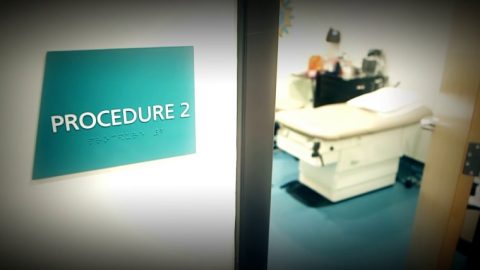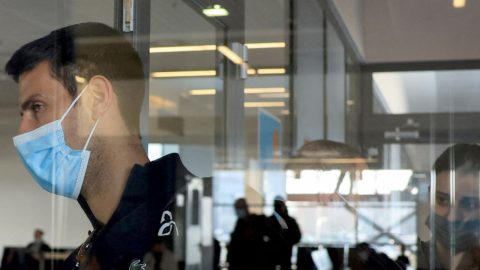
People who have no choice but to sit at a desk for hours on end may have seen, in recent years, a slew of headlines about the scary consequences of sitting for long periods of time — and how even regular exercise couldn’t undo the damage.
Research published Tuesday in the British Journal of Sports Medicine, however, finds that about 22 minutes a day of moderate to vigorous activity may provide an antidote to the ills of prolonged sitting. What’s more, the researchers found that, as a person’s activity level increases, the risk of dying prematurely from any cause goes down.
The study found that the current recommendation of 150 minutes per week of moderate to vigorous activity “is enough to counteract the detrimental health effect of prolonged sitting,” said the study’s lead author, Edvard Sagelv, a researcher at The Arctic University of Norway. “This is the beautiful part: we are talking about activities that make you breathe a little bit heavier, like brisk walking, or gardening or walking up a hill.”
While 150 minutes may seem like a lot, Sagelv broke it down into manageable terms.
“Think of it: only 20 minutes of this a day is enough, meaning, a small stroll of 10 minutes twice a day — like jumping off the bus one stop before your actual destination to work and then when taking the bus back home, jumping off one stop before,” he said in an email.
The new research appears to upend findings from earlier studies showing that regular exercise didn’t zero out the negative effects associated with extended periods of sitting. One of those studies, published in the Annals of Internal Medicine in 2017, found that working out regularly reduced some of the harms associated with hours of sitting, but didn’t completely eliminate them.
In the study, researchers looked at information from nearly 12,000 people ages 50 and older in four datasets from Norway, Sweden and the United States. In those datasets, the participants wore movement detection devices on their hips for 10 hours a day for at least four days. All of the individuals included in the new study were tracked for at least two years.
More on the benefits of exercise
In the new analysis, the researchers accounted for factors, including medical conditions, that could’ve affected risk of early death.
About half of the participants spent 10 ½ hours or more sedentary each day.
When the researchers linked the participants’ information with death registries in the different countries, they found that over an average of five years, 805 people, or 17%, had died. Of those who died, 357, or 6%, had spent less than 10 ½ hours a day seated, while 448 averaged 10 ½ hours or more sedentary.
Sitting for more than 12 hours a day, the researchers found, was associated with a 38% increased risk of death as compared to eight hours, but only among those who managed to get less than 22 minutes of moderate to vigorous activity a day.
The risk of death went down with increasing amounts of physical activity. An extra 10 minutes a day translated into a 15% lower risk of death among those spending fewer than 10 ½ hours seated and a 35% lower risk among those who spent more than 10 ½ hours sedentary each day.
Lower intensity activity only made a difference among participants who spent 12 or more hours sitting every day.
Sagelv said he believes the new study is more accurate than previous research because he and his colleagues painstakingly adjusted data from the four datasets so that the individuals in them were more comparable to one another and thus their data could be treated as if they were all participating in a single study.
Prolonged sitting is becoming a bigger and bigger problem, said Benjamin Boudreaux, a research scientist in the division of behavioral cardiology at Columbia University Vagelos College of Physicians and Surgeons, who was not involved with the new research.
More activity can easily be incorporated into the schedules of even the busiest people, Boudreaux said.
“I always tell people if they are pressed for time, when you go grocery shopping or running errands, park your car far away in the lot. If you have a meeting with co-workers, do a walking meeting.”
Dr. Howard Weintraub, clinical director of the Center for the Prevention of Cardiovascular Disease at NYU Langone Heart, said he worries that people will take the wrong message from the study and “think all they need is 22 minutes of activity, that it will make them bulletproof like Kevlar and after that they can plunk down in a chair.”
Instead, he said, “people should look at this and then speak to their physician or trainer about it.”
“Ask what they think about the strategy of 22 minutes of activity a day being an antidote to sitting,” said Weintraud, who wasn’t involved with the new research.
The good news from this study is that even a minimum amount of activity will help decrease the risk of premature death related to prolonged sitting, said Dr. Joseph Herrera, professor and chair of the department of rehabilitation and human performance at the Mount Sinai Health System in New York City.
“It says that 20 to 25 minutes of moderate to vigorous activity for those who are sedentary — walking briskly, pushing a lawn mower, riding a bicycle at a speed of 10 to 12 miles per hour — can make a difference,” said Herrera, who was not involved with the new study. “It doesn’t mean if you’re already active and exercising you can cut down to 20 minutes, the bare minimum.”
Follow NBC HEALTH on Twitter & Facebook.










Recent Comments